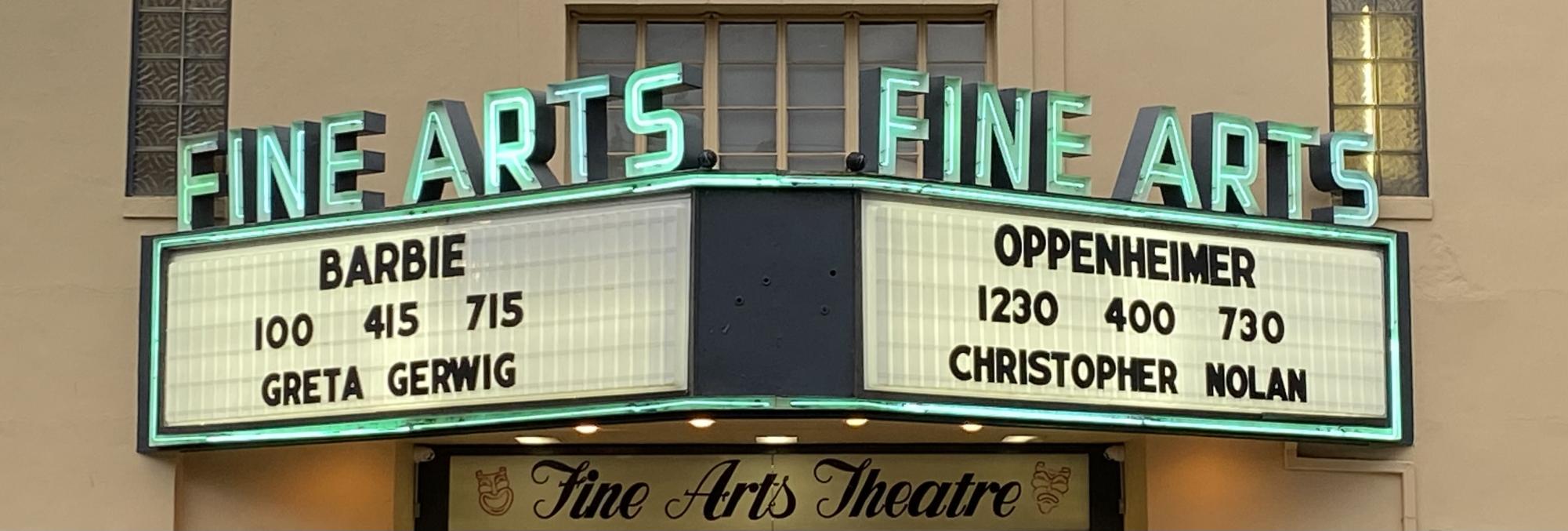After numerous years dominated by the production of blockbuster films catering to the established fanbase of pre-existing superheroes, the emergence of the Barbenheimer phenomenon in the summer has pleasantly surprised many. “Barbie” and “Oppenheimer” have demonstrated how festival-acclaimed directors can successfully introduce themselves to mainstream culture through clever and innovative cinematic projects. “Barbie” has already grossed over half a billion dollars worldwide, while “Oppenheimer” has achieved a formidable $300 million at the box office. The collective triumph of these two very distinct films appears to convey a message to Hollywood.
While there’s a touch of irony in some of this, there is a genuine and contagious enthusiasm for both films that is driving the Barbieheimer narrative. This excitement has become so widespread that “Barbieheimer” (as it has been playfully dubbed by some) has transcended the digital realm and become a real-world phenomenon. Fans of Christopher Nolan, Barbie enthusiasts, and cinephiles alike have turned the opening weekend of these movies into an unexpected double-feature event – a remarkable feat considering that “Oppenheimer” is a somber three-hour historical exploration of the man behind the creation of nuclear devastation, while “Barbie” appears to be a spirited, effervescent cinematic joyride. Nevertheless, the fervor among fans is so palpable that the hype surrounding “Barbieheimer” has arguably eclipsed the buzz around the two individual films. Greta Gerwig and her leading star, Margot Robbie, have actively embraced this phenomenon by showcasing their tickets to “Oppenheimer,” and even Hollywood heavyweights like Tom Cruise (promoting his own “Mission: Impossible — Dead Reckoning Part One”) and Cillian Murphy (who portrays Oppenheimer) have joined in on the excitement.
The marketing of Barbie was out of control, and in consumers’ faces anywhere they went, so naturally expectations were high. However, concerns have been raised by certain fans that the extensive meta-commentary surrounding Barbieheimer has overshadowed the unique merits of each individual movie. These concerns do hold some validity. There has been extensive discourse about the optimal sequence in which to experience these films together. Some viewers suggest that using “Oppenbarbie” signifies watching “Oppenheimer” first, while “Barbieheimer” implies beginning with “Barbie,” although this distinction has largely been drowned out amidst the Barbieheimer buzz.
Is there a significance to this viewing order? It’s unlikely that most people are eager to follow up a serious historical drama with a light-hearted girl power anthem, but then again, perhaps “Barbie” is the perfect choice for a leisurely brunch movie, while “Oppenheimer” necessitates a few mimosas to digest. Alternatively, you might be the type of individual who opts for a double-double feature: “Barbie” one day, “Oppenheimer” the next. Embrace the extravagance! Embrace the Barbieheimer experience.
Certain fans have taken the rivalry quite literally, conducting comparisons between the two films in terms of their marketing strategies, projected box office earnings, and presumably, their vastly different content. “Barbie” is a PG-13-rated film based on Mattel’s iconic, go-getter toy doll, while “Oppenheimer” carries an R-rating and reportedly includes full-frontal nudity from the leads, Cillian Murphy and Florence Pugh, amidst all the atomic devastation.
The most glaring lesson to draw from the Barbenheimer experience is that audiences crave originality and ingenuity, rather than a never-ending stream of sequels and reiterations of what has come before. Assuming that most studio executives recognize this fundamental aspect, there are still more profound insights to glean. These movies reflect a broader set of principles and possibilities that studios should contemplate as they embark on creating films that captivate the ever-changing interests of audiences.









